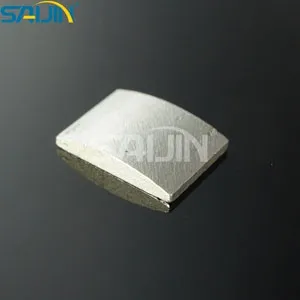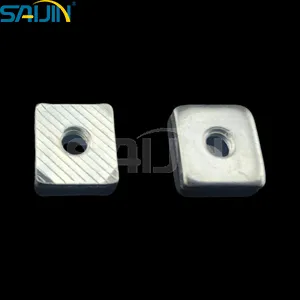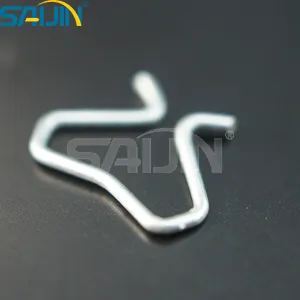Silver metal oxide contact material has excellent switching operation characteristics and is one of the widely used contact materials in low-voltage appliances. Electrical contacts are the components that directly connect and break circuits in switching appliances, and play a decisive role in the safe operation of switching appliances. With the development of low-voltage electrical appliances such as relays and contactors towards high power, miniaturization and high reliability, higher performance requirements have been put forward for the matching contact materials, so the research and development of contact materials has been widely emphasized. As the Cd in the AgCdO material currently in use is toxic and poses a hazard to humans and the environment in the manufacturing and use process, there is an urgent need to develop new non-toxic materials to replace AgCdO.
AgSnO2 contact material with its own excellent resistance to electrical erosion and better than AgCdO contact material resistance to DC transfer performance in new automotive appliances, aerospace appliances, high-quality household appliances and other aspects become the first choice. Especially in some of the products exported to developed countries in Europe and the United States, AgSnO2 contact material is the only choice, can be used under high current environmentally friendly materials.
The working state of electrical contacts
I. Working condition of contacts
1. Closing process
In the closing process, the dynamic contact is closed with a certain speed to the static contact movement. As the contact and its components have elasticity, when the dynamic contact and static contact collision, the kinetic energy of the contact system is mostly transformed into deformation energy, when the contact deformation recovery deformation energy into kinetic energy, so that the dynamic contact bounce movement. If the contact bounces more than its deformation energy, the dynamic and static contacts are separated from each other to produce an arc (short arc), the high temperature of the arc makes the contact surface melting, gasification and spattering, resulting in contact "off erosion". Contact in the bouncing process due to friction and plastic deformation and other consumption of energy, the bouncing amplitude gradually decreases, and finally bouncing stop so as to enter the closed working state. Contact bouncing stop after the arc extinguished, the contact surface of the molten metal quickly cooled and solidified, easy to make the contact fusion welding, generally known as "dynamic fusion welding". If the welding strength of the contacts exceeds the breaking force of the switch mechanism, the contacts will cause permanent fusion welding and the switch will lose its working function.
2. Closing conductive process
Since there is a certain contact resistance at the contact, when the current passes through the contact, the Joule loss generated by the contact resistance causes the contact to heat up and the temperature rise to increase. If the temperature rise of the contact is too high, the contact surface will quickly grow thicker oxide film, so that the number of conductive spots is reduced, the size is reduced, the contact resistance becomes large. Once the contact resistance becomes large, the temperature rise further increases, the contact resistance becomes even larger, so the vicious circle, and finally lead to contact surface melting and welding, or contact resistance becomes infinite ambassador conductive failure. This contact resistance due to the heating of the fusion welding contact is called "static fusion welding". In addition, the contact many times after energized operation, due to the contact resistance and the thermal effect of the arc, so that the contact surface erosion deformation, oxide aggregation, will also lead to increased contact resistance, temperature rise.
3. Breaking process
In the breaking process, the dynamic contact is separated from the static contact at a certain speed, and once the contact is separated, the arc is ignited. Low-voltage appliances often use magnetic blowing coil to make the arc quickly move into the interrupting chamber and extinguished. However, the arc cannot be driven by the magnetic field when the contacts start to separate, it has to stay on the contacts for a period of time, so the contact surface erosion. Only when the contacts are separated beyond a certain distance, the magnetic field can drive the arc movement. The arc leaves the contact and enters the interrupting chamber and is extinguished. After the arc is extinguished, the contact gap plays the role of isolating the line voltage.












